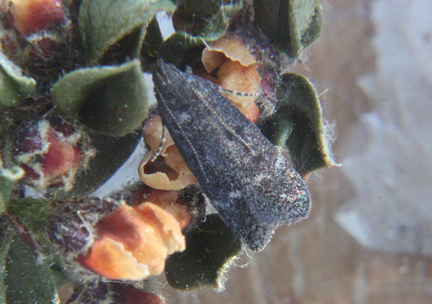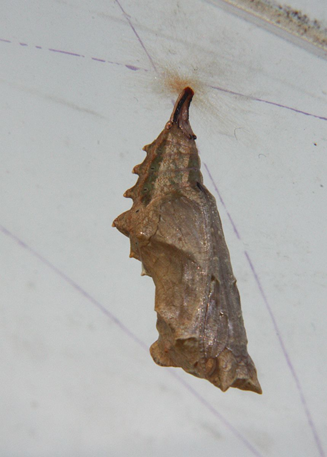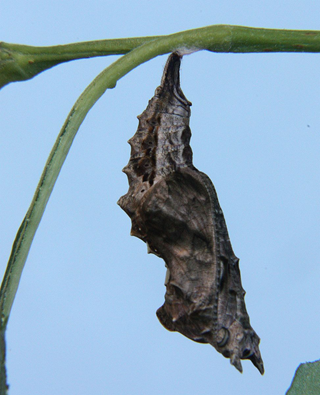June 9
2021 June 10
Jeremy Tatum writes: Yesterday I showed a large, brightly coloured, beautiful butterfly – an Anise Swallowtail. Today we have a moth of perhaps a little less striking appearance, just 6 mm in length, and slightly more modest in coloration and pattern:


Athrips rancidella (Lep.: Gelechiidae) Jeremy Tatum
Have you ever noticed extensive silk webbing on Cotoneaster horizontalis? That is the work of the caterpillars of Athrips rancidella. The moth shown above was reared from Cotoneasters in the garden of my Saanich apartment.
Here are two chrysalides of comma butterflies from caterpillars found in the Greater Victoria area this year, the first on nettle, the second on willow:


Satyr Comma Polygonia satyrus (Lep.: Nymphalidae) Jeremy Tatum


Green Comma Polygonia faunus (Lep.: Nymphalidae) Jeremy Tatum
Pupae of butterflies (only):
Singular: One chrysalis. No variations allowed.
Plural: Two chrysalides. Four syllables, stress on the second. Excellent Greek. Written form.
or Two chrysalids. Three syllables, stress on the first. Perhaps the commonest spoken form.
or Two chrysalises. Four syllables, stress on the first. Perfectly acceptable English plural.
Chrysalid: No such word, singular or plural.
Talking of invertebrates, today I saw a crayfish Pacifastacus leniusculus in the ditch between Maber Flats and the polo field in Central Saanich. To see one, a pair of polarizing sunglasses is immensely helpful to cut out the sky reflection – it would make all the difference between not seeing one and seeing one. A good quality polarizing filter in front of a camera lens would help to photograph one.
